
Mammals Around Las Vegas, Wildlife Around Las Vegas
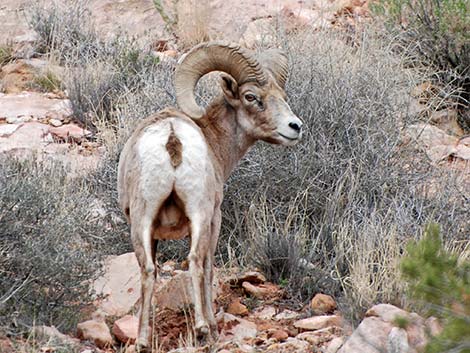 |
General Information: Desert Bighorn Sheep (Ovis canadensis) are large sheep of desert mountains with a tan coat and white rump. Adult males are recognized by their large, curled horns. Females and young males have smaller, straighter horns. Adult males weigh about 140–180 pounds, while females are somewhat smaller, weighing about 90–150 pounds. They stand about 2-1/2 to 3-1/4 feet at shoulder. Taxonomy: Order: Artiodactyla (Even-toed Hoofed Mammals); Family: Bovidae (cows, sheep, goats, and similar mammals). Breeding: Males and females gather to breed in the fall (November, December). Males leave the females and young to form separate bachelor herds during the summer. Males fight by bashing heads. Females breed at age 2-1/2 years. |
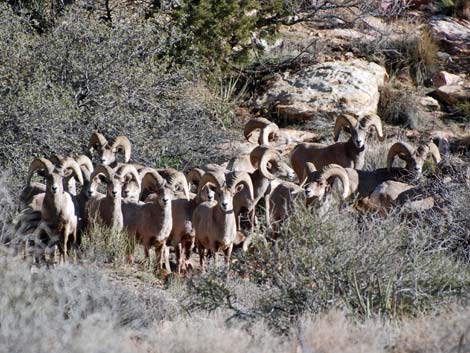 |
Diet: Vegetation; browse on shrubs, grasses, and forbs. Range: Southern Rocky Mountains in Canada south into Mexico throughout mountainous regions from California to Wyoming. Where to Find: Bighorn are fairly common in the mountains around Las Vegas. Good places to look for them include the cliffs around Willow Springs Picnic Area at Red Rock Canyon NCA, crags along Highway 172 (Hoover Dam Access Road) near Hoover Dam, and Hemenway Park in Boulder City. Comments: |
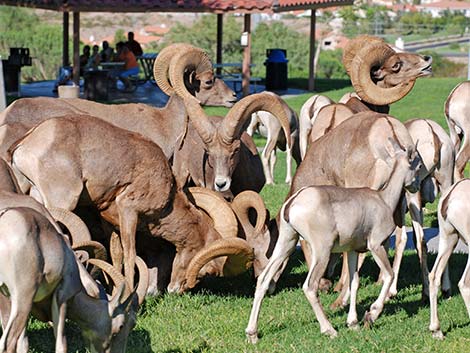 |
A little extra company at the picnic. Link to many more photos of Bighorn at Hemenway Park, Boulder City, NV |
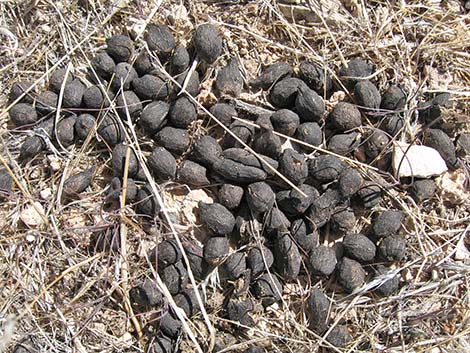 |
Bighorn scat in the Arrow Canyon Range. These scats are not fresh; fresh scat would be blacker, shiny, and smoother on the surface. This pile is fairly large, most piles are smaller. Bighorn scat is oblong and about 1/2-inch long. They are similar to Mule Deer pellets, but a bit larger, and rabbit pellets are smaller and round. |
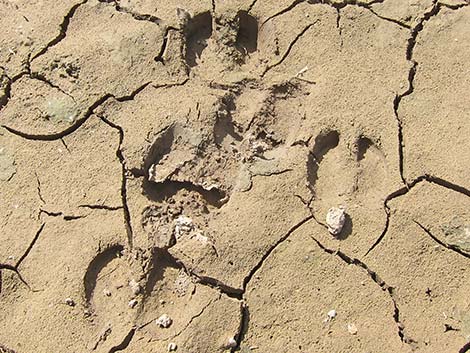 |
Bighorn Sheep footprints in the mud. Sheep prints show the typical "cloven hoof" seen in all Artiodactyls (Deer, Pronghorn, Sheep, Cows, etc., but not Horses). |
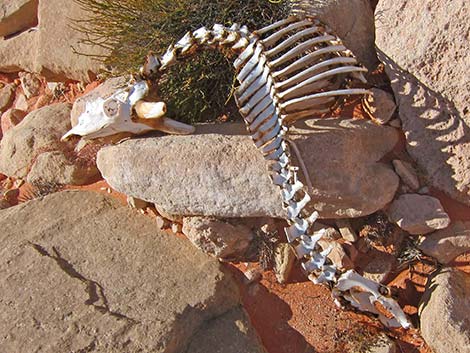 |
Bighorn Sheep don't live forever. |
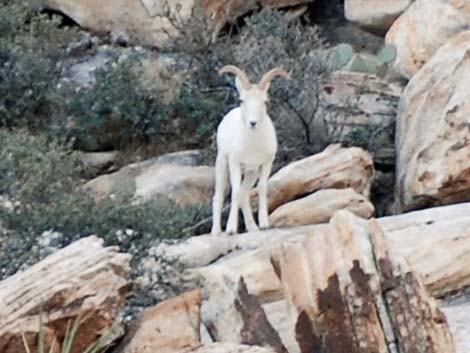 White bighorn sheep (not albino) |
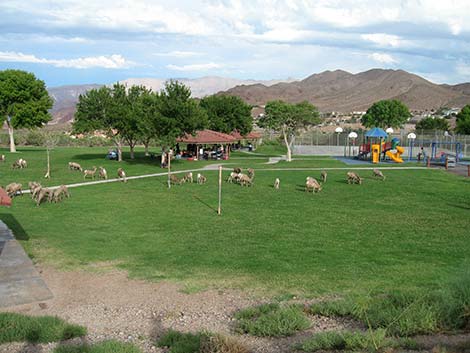 Bighorn Sheep at Hemenway Park, Boulder City |
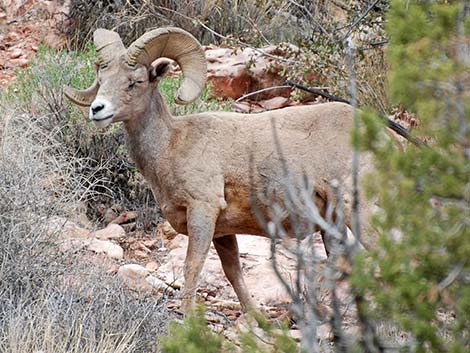 Red Rock Canyon NCA |
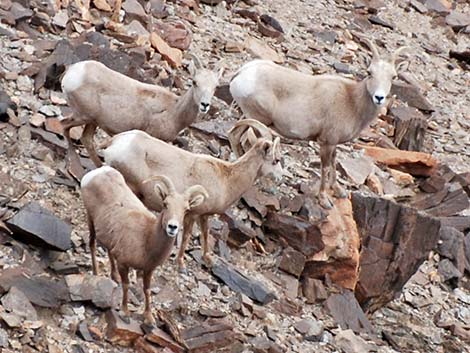 Death Valley National Park |
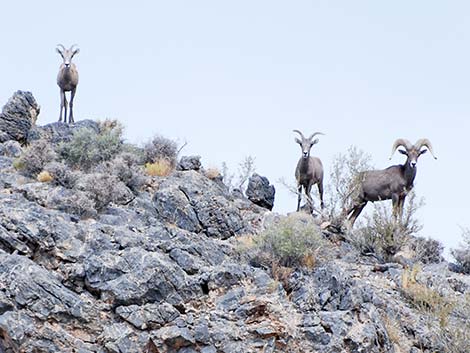 Desert National Wildlife Range |
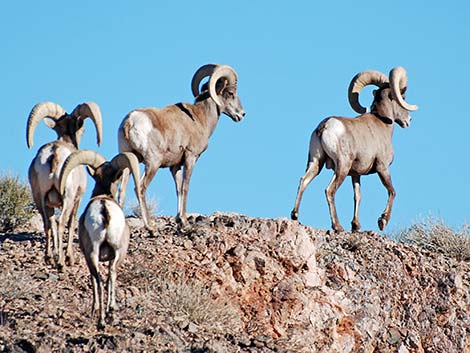 El Dorado Wilderness Area |
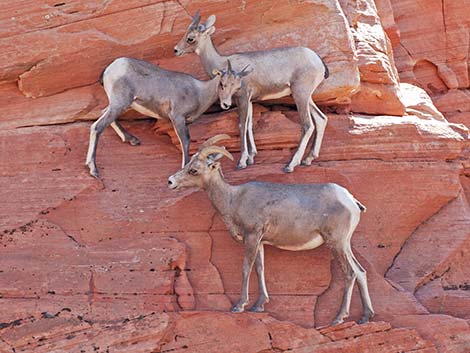 Zion National Park |
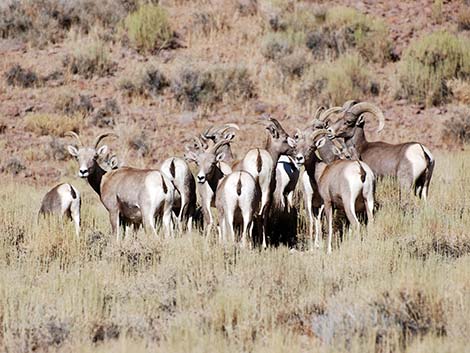 Bighorn Sheep in middle Nevada |
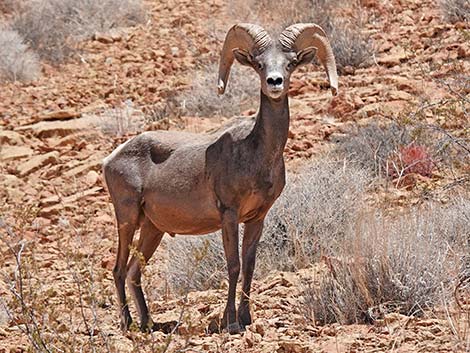 Bighorn Sheep at Lake Mead |
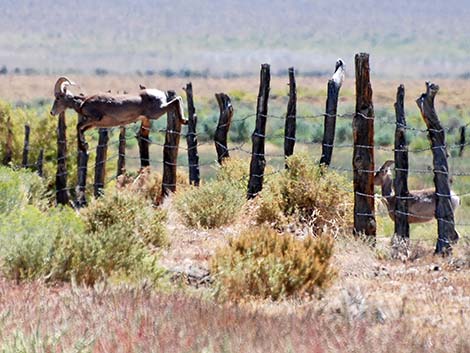 Bighorn sheep jumping barbed-wire fence in middle Nevada |
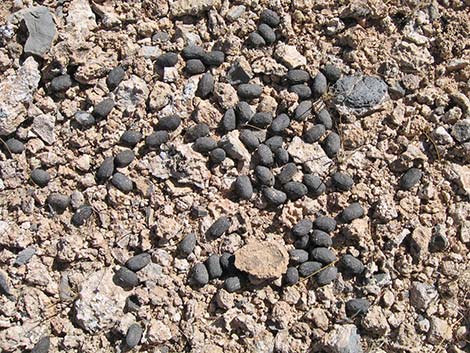 Bighorn scat |
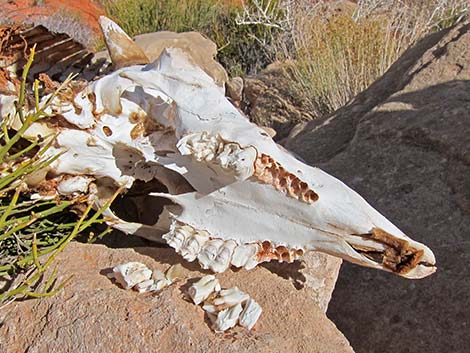 Desert Bighorn Sheep skull with teeth |
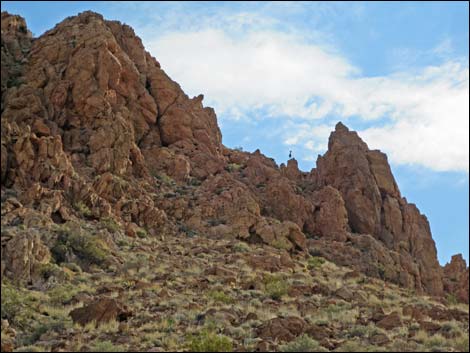 Bighorn Sheep in Gold Butte National Monument |
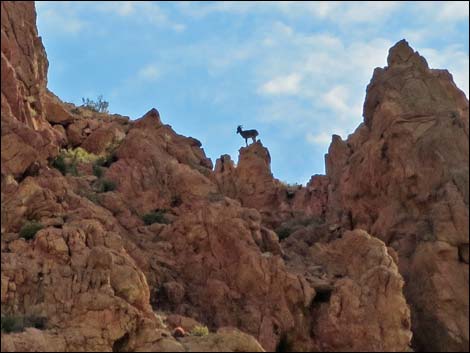 Bighorn Sheep in Gold Butte National Monument (zoom) |
Note: All distances, elevations, and other facts are approximate.
![]() ; Last updated 240205
; Last updated 240205
| Mammals Around Las Vegas | Wildlife Around Las Vegas | Glossary | Copyright, Conditions, Disclaimer | Home |